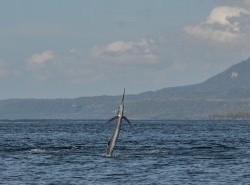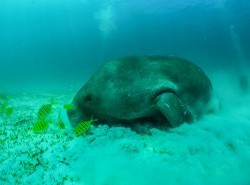When the world you occupy is one of eternal darkness, a little light can come in handy. In the absence of torches, the denizens of the deep ocean have adapted to produce a glow of their own – bioluminescence. Almost all deep sea dwellers emit light of some kind – usually it’s in the blue or green spectrum and is caused by a chemical reaction where luciferin – a light emitting pigment – reacts with oxygen. Bioluminescence has lots of uses, from attracting mates and luring prey to warning off predators and even mimicking other creatures. So without further ado, here are five of our favourite bioluminescent beasties to brighten up your day!
ALARM JELLYFISH

The ALARM JELLYFISH's flashing blue police lights entice bigger fish to come and scare off predators
Jellies are big on bioluminescence, but Atolla Wyvillei, popularly known as the Alarm Jellyfish has an especially unique application for its light show. When threatened by predators, it emits a pattern of blue flashing lights. Scientists believe the spiralling display is designed to attract even bigger predators that will hopefully pounce on the Alarm Jellyfish’s antagonist. Kind of like a deep-sea burglar alarm.
ANGLER FISH

The spectacularly downplayed Angler Fish. Don't mind me, just doing a spot of fishing...
A pretty mild name considering its horror film looks – you wouldn’t want to bump into this dude outside of your bathysphere. Especially considering it can grow up to a meter in length. So imagine you’re a fish cruising through the inky blackness when you spy a tiny indigo globe floating like a will o the wisp in the night. A warm, welcoming blue glow. Naturally, you’re drawn to it. It’s just bright enough so that when you get close you see those scimitar like teeth for a split second and realise you’re the catch of the day before the jaws snap closed around you and night falls forever. The light source at the end of its fishing rod dorsal fin is actually a symbiotic bacteria that lives in and around the tip, or esca. Oh and both its jaws and stomach can distend so much, it can demolish prey up to twice its size.
COMB JELLYFISH

Around half of all Comb Jellyfish are bioluminescent...but those rainbow flashes aren't!
There are thousands of types of comb jellies, all of which fall into the phylum ctenophore. They vary in size from a few millimetres to 1.5 metres and many of them display bioluminescence. They don’t have brains per se, but rather a ‘neural net’ functioning across their entire biomass. Deep-sea varieties throw light shows to attract mates or lure prey species. The glimmering rainbow lights commonly associated with comb jellies are in fact caused by light scattering as the creature moves and not by bioluminescence. A few species are able to squirt a sort of bioluminescent ink to confuse predators, not unlike an octopus.
VAMPIRE SQUID
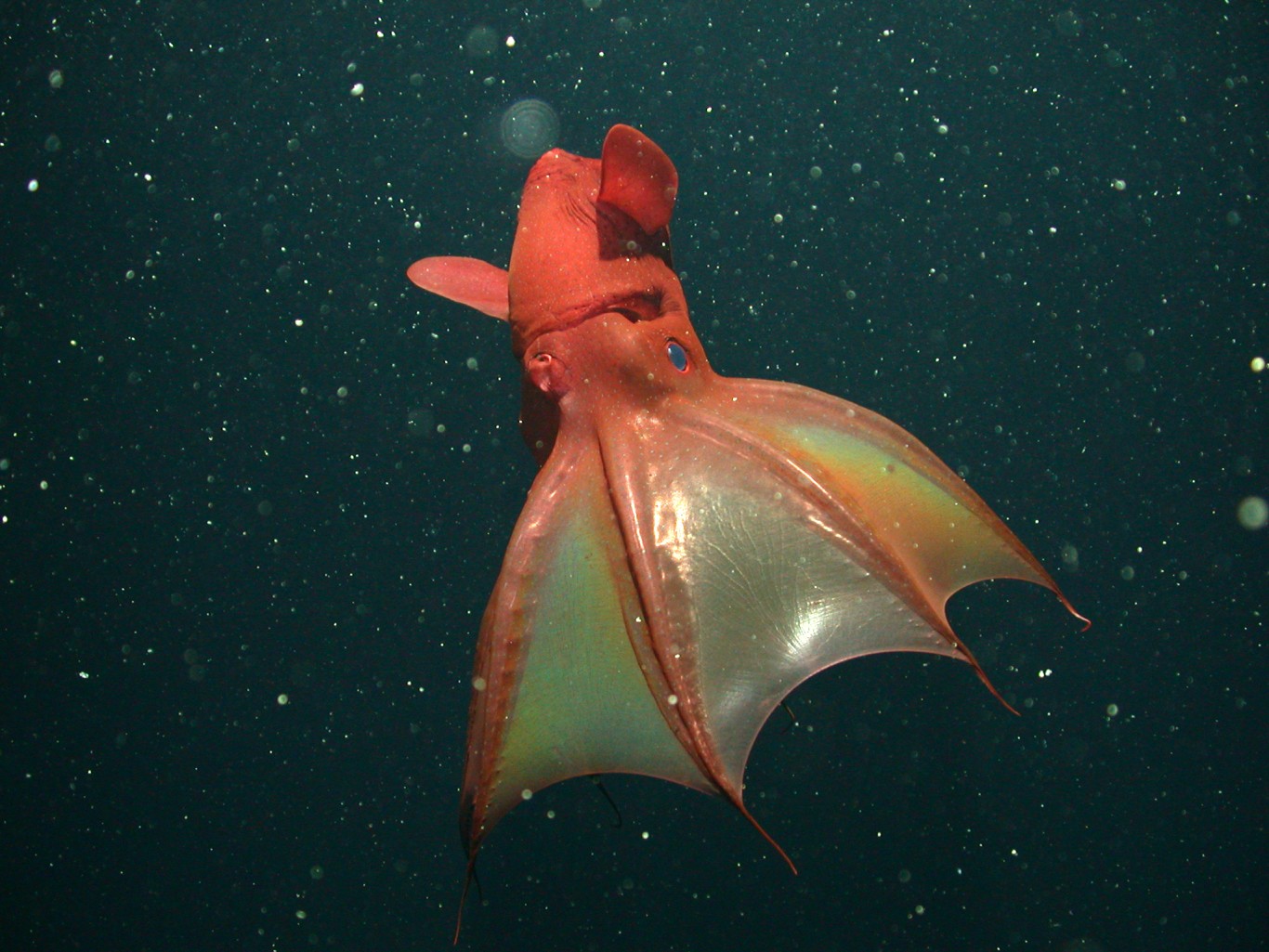
The Vampire Squid - it looks like a novelty umbrella but has deep water super powers
The Vampire Squid’s Latin name is Vampyroteuthis infernalis, which translates as ‘vampire squid from hell.’ The name seems a little harsh considering it looks more like a novelty umbrella than a demon. Vampire Squid are amazingly adapted for living at great depth (up to 900 metres), where their aerobic breathing system still functions in the so-called Oxygen Minimum Zone where oxygen concentration is down to just 3%. No other cephalopods can do this, indeed only a handful of organisms in the world share their ability. Vampire Squid are covered in photophores that emit random flashes of light for up to minutes at a time. They use these trippy displays together with erratic movements to avoid predators – fleeing at speed isn’t an option when you breath aerobically and there’s only 3% oxygen in the water.
BARRELEYE FISH
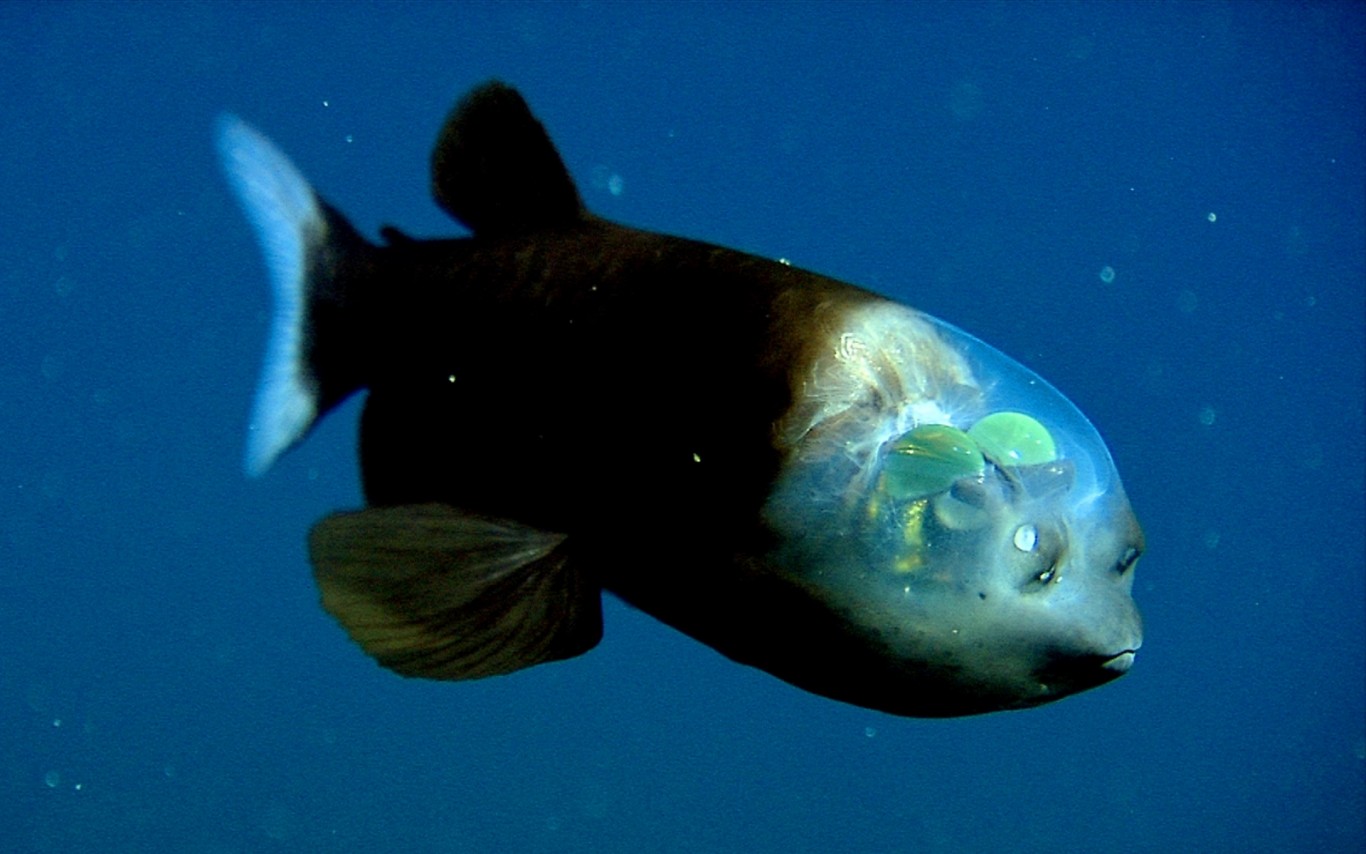
Barrel Fish have eyes in the tops of their transparent heads which is handy.
How cool is the Barreleye Fish? It looks like the submarine out of Fantastic Voyage – and it’s even more outlandish. See the eyes just above the pouting mouth? Well those aren’t eyes – they’re sense organs that bear a closer resemblance to olfactory glands. Its eyes are contained in its transparent dome piece, which means that yes, it has eyes in the back (or more accurately the top) of its head. This means it can spy predators trying to drop in from above, plus a transparent head allows more light to reach those massive goggles. Oh and they have bioluminescent organs which are probably used as a form of counterillumination camouflage. But the truth is, we included them because of the see through head and the 180 degree goggle eye vision. I mean, come on, how do you come up with that?!
VIPERFISH
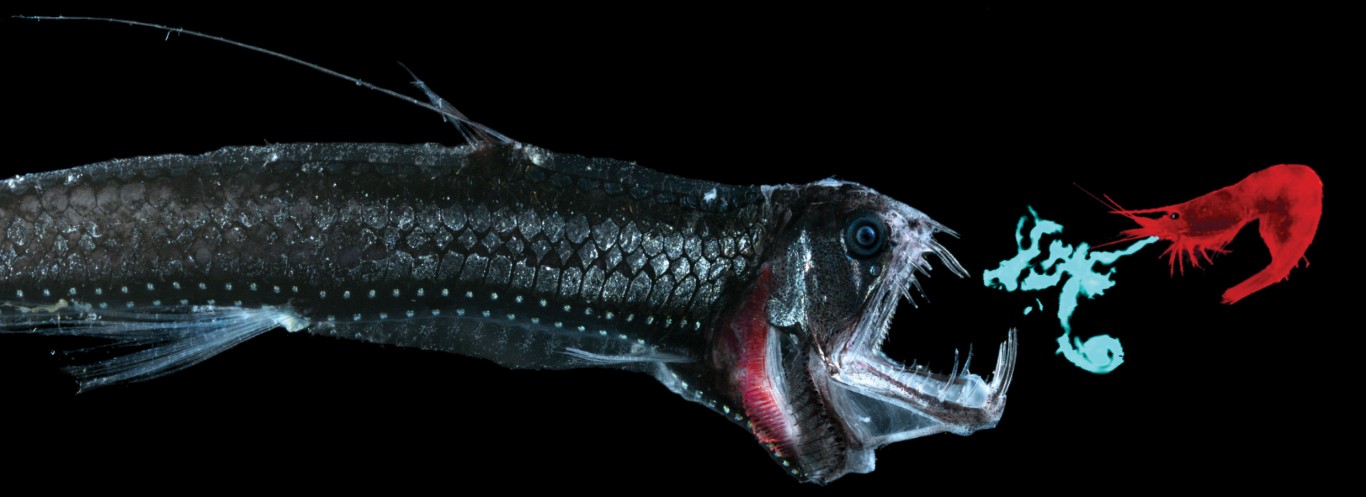
A shrimp tries to evade the formidable jaws of a Viperfish by squirting its own bioluminescent cloud to confuse it...
Another mean looking critter – though it only grows to a length of up to 60cm, so significantly smaller than the Angler Fish. Viperfish are deadly predators however, using a similar light emitting technique to attract unsuspecting fish into their fearsome jaws. They wave their dorsal fins in the water while remaining completely still, like a watchman raising a lantern in a foggy Victorian street. Well, sort of. The technique works equally well in the seduction game, though it may use a specific pattern to indicate its amorous intentions. This chap is aiming to clap its jaws round a little shrimp, which has jetted out its own bioluminescent spray to try and avoid getting eaten.


